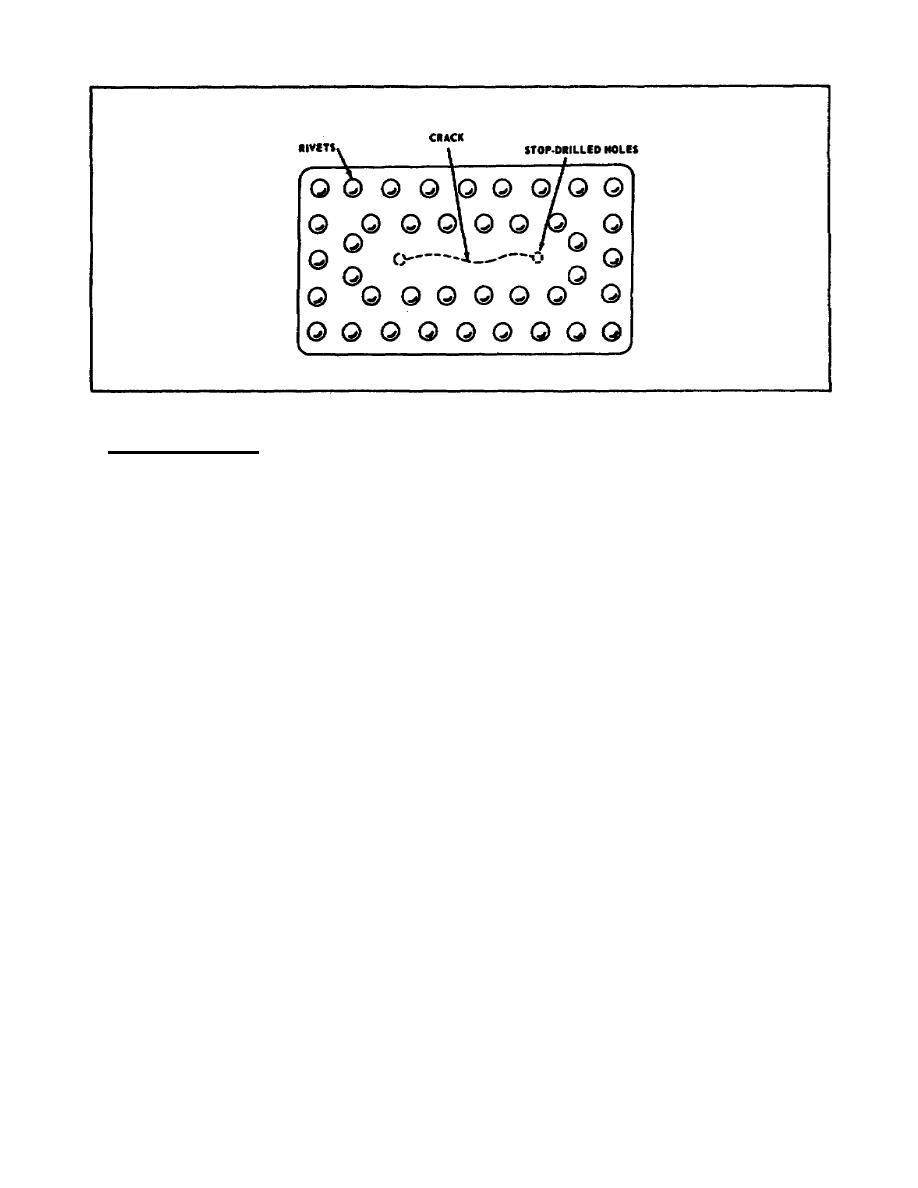
Figure 2-3.
Lap Patch for a Crack.
Flush Patches.
Flush patches in locations free of internal
structures are relatively easy to install.
This is especially true
where there is an access door or plate through which rivets can be
bucked.
In inaccessible areas, the flush patch can be used by
substituting blind rivets for standard rivets, where permitted.
However, ways of inserting the doubler through the opening must be
devised. A doubler is the piece of material used to back up, double,
or strengthen the filler patch.
One such method is illustrated in
Figure 2-2. The doubler has been split. To insert the doubler, slip
one edge under the skin and turn the doubler until it slides into
place under the skin.
Notice in the figure that a screw has been
installed temporarily as a handle to help insert the doubler.
This
type of patch is generally recommended for holes up to 1 1/2 inches
in diameter. Usually holes larger than 1 1/2 inches are trimmed to a
rectangular or square shape. All corners must be rounded to at least
a 1/2-inch radius.
Figure 2-4 shows such rounded corners.
In all
flush patches the filler must be of the same gage and material as the
original skin.
Generally, the doubler must be of material one gage
heavier than the skin.
Figure 2-5 shows a flush patch over an
internal structure.
63
AL0992



 Previous Page
Previous Page
